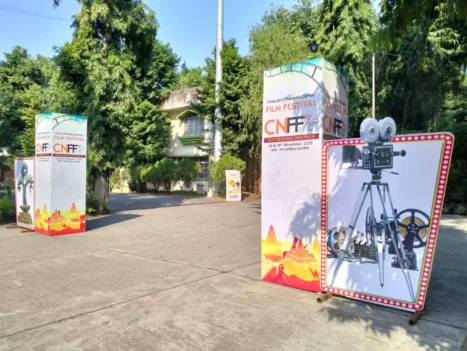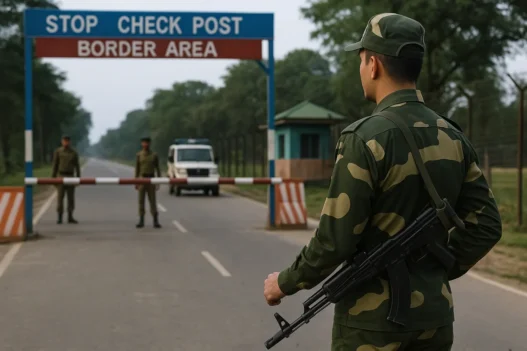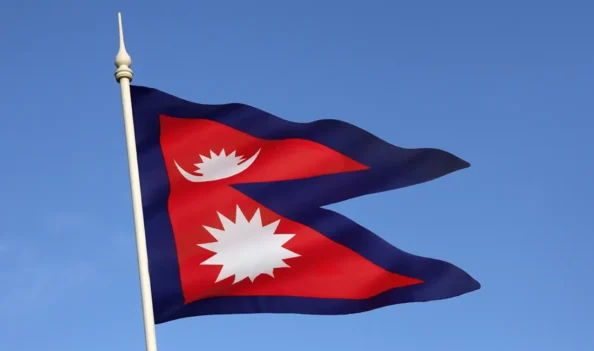What began as a symbol of Nepal’s ambition—a supposed game-changer for aviation and tourism—has, two and a half years after its grand opening, become an emblem of poor governance, political meddling, corruption, and problematic foreign involvement. The Pokhara Regional International Airport (PRIA), built with a Chinese soft loan and constructed by a Chinese state-owned firm, sits largely idle today. Its runways rarely see international traffic, the terminals echo with emptiness, and its administration is under growing pressure from mounting criticism.
The airport was intended to boost tourism in Pokhara, the gateway to the Annapurna range. Instead, the project has become mired in controversy, plagued by financial irregularities, and riddled with technical and design flaws.
A Dream Derailed
The vision for an international airport in Pokhara, Nepal’s tourism hub, dates back over half a century. Since the 1970s, organizations like Germany’s DIWI and Japan’s JICA offered technical assistance for feasibility studies. Despite repeated government promises, political turmoil and the decade-long Maoist conflict (1996–2006) repeatedly stalled progress.
After the 2006 peace deal between Maoist rebels and the government, the airport project re-emerged. By 2010, engineering plans were ready—but what followed was more about political maneuvering and foreign interests than sound planning.
China’s Entry and a Controversial Turn
In 2011, under Prime Minister Dr. Baburam Bhattarai, Nepal signed a memorandum with China CAMC Engineering Co.—a subsidiary of state-owned Sinomach—making CAMC the de facto contractor before any competitive bidding. This raised immediate concerns. Leaked documents revealed Nepal’s government had pledged “solid and substantial support” to CAMC’s proposal. The Commission for the Investigation of Abuse of Authority (CIAA) seized documents over suspected manipulation, though the probe was later dropped, undermining public trust.
Public frustration in Pokhara ran high. Local politicians and civil society, weary of inaction, demanded rapid progress. Ironically, the push for speed, combined with China’s eagerness to fund and build the project, led Nepal to rush the tender process, sidestepping thorough due diligence.
A Questionable Bidding Process
The tender devolved into a bureaucratic and geopolitical spectacle. Only three Chinese state-affiliated firms ultimately bid. It later emerged that the Chinese Embassy in Kathmandu coordinated the process—colluding on bid prices and submissions.
The price itself was alarming. Initial cost estimates were around USD 170 million, but CAMC submitted the lowest bid at USD 305 million—while other Chinese “competitors” bid even higher.
Within Nepal’s Civil Aviation Authority (CAAN), objections surfaced. Officials and employees’ unions accused CAMC of conspiring with political parties to inflate the project cost. Despite this, political pressure—especially from the ruling Maoist party, whose activists rallied in support—pushed the project forward.
Political Tug-of-War
To quell dissent, CAMC eventually agreed to adjust its cost. Another study estimated the project at USD 264 million, but even this figure did not last. Then-Finance Minister Dr. Ram Sharan Mahat rejected the loan’s terms, deeming them unfavorable compared to other projects such as Gautam Buddha International Airport, funded by the Asian Development Bank.
After months of stalemate, an independent expert committee settled on a project cost of USD 215.96 million—the final working estimate. In 2014, CAAN signed a revised agreement with CAMC, securing a concessional loan from China’s EXIM Bank. Despite fears that procedural delays warranted a new tender, ministerial intervention pushed the project ahead.
Loan Conditions and Sovereignty Concerns
Controversy intensified when China’s EXIM Bank required an escrow account for loan disbursement. The initial demand—that all Nepali airports’ income be funneled into this account—would have given the bank indirect control over Nepal’s aviation sector. Ultimately, only PRIA’s revenue was pledged, but skepticism persisted, raising concerns over fiscal sovereignty and excessive dependence on Chinese credit.
The 2016 loan deal, signed during Prime Minister KP Sharma Oli’s Beijing visit, stipulated a 20-year payment term with a 7-year grace period and a 2 percent annual interest rate. However, since the government re-lent the funds to CAAN at a 5 percent interest rate, the effective cost rose further.
After years of delays, construction finally began in late 2017. The airport was physically completed by March 2022 and opened with much fanfare on January 1, 2023.
Celebration Turns to Disappointment
Initial optimism quickly faded. Despite being promoted as a “game-changer” for Nepal’s tourism and aviation sectors, PRIA failed to attract international airlines. As of now, only one Nepali carrier (Himalaya Airlines) operates a weekly international flight to Lhasa. The runways remain empty, the terminals lifeless.
This lack of international traffic is just one of many serious problems.
Technical Flaws and Corruption Allegations
A recent parliamentary report highlighted alarming construction anomalies, especially regarding the runway’s elevation. Designs specified a height of 815–816 meters above sea level, but the actual runway sits at 804 meters—well below specifications. This raises safety concerns, particularly for larger aircraft.
Further, a USD 5.5 million payment was made for transporting soil to elevate the runway, allegedly from 5 kilometers away. Investigators found no solid evidence the soil was sourced as claimed.
Environmental management was an afterthought. Initial studies didn’t account for hill-cutting or deforestation, but over 600 trees were hastily cleared from Rithepani Hill to “clear the flight path” just before completion.
Critics allege the runway was deliberately built lower to later justify hill-cutting, possibly pointing to collusion between officials and contractors. Both the CIAA and the Office of the Auditor General have flagged the project for possible negligence and financial irregularities, including unauthorized customs, fee, and VAT exemptions for the Chinese contractor—factors contributing to spiraling costs.
Commercially Unviable and a Strategic Blunder
The airport’s design and construction have rendered it commercially unviable. International airlines are deterred because larger aircraft can’t land, and load capacity for narrow-body planes is capped at just 80–85 passengers. Beyond a handful of charter flights, the weekly Pokhara-Lhasa service remains the only scheduled international operation.
This flawed design has left Nepal burdened by a massive Chinese loan, with little hope of the airport becoming fully operational any time soon. The airport’s viability is in question, fueling suspicions that the project may be part of a broader Chinese strategy to entangle Nepal in a debt trap. Yet, despite such concerns, many who are vocal on other issues have stayed conspicuously silent—perhaps to avoid straining ties with China.
Technical errors—like improper soil handling and the lowered runway—have exposed deep flaws in execution, casting serious doubt on the project’s long-term sustainability.
A Hard Lesson for Nepal
PRIA now stands as a cautionary tale. What should have been a catalyst for tourism and economic growth has instead become a symbol of mismanagement, political interference, corruption, and questionable reliance on foreign finance.
In recent months, major international media—including The New York Times, Business Standard, and Deccan Herald—have highlighted the grave corruption tied to the airport’s USD 216 million construction. These reports have cast a spotlight on the scale of corruption in Nepal.
Besides the reported NPR 14 billion (about USD 105 million) in corruption, severe engineering flaws and safety concerns further compound Nepal’s woes. The involvement of a Chinese state-owned firm means Chinese authorities, too, are implicated in the project’s irregularities.
Official daily operating costs are not published, but estimates suggest the airport is generating a monthly loss of around USD 4 million, including USD 3.2 million in annual interest and loan repayments, plus other operational expenses. This is a heavy financial burden for Nepal.
It is now clear that PRIA is a financial albatross. Unlike successful airports around the world, PRIA cannot generate sufficient revenue from regular domestic or international flights. Meeting operational costs—let alone servicing the Chinese loan—has become nearly impossible.
Nepal has requested China convert the USD 215.96 million loan into a grant to ease the burden. However, in light of the large-scale corruption exposed by Nepal’s parliamentary committee, the likelihood of such debt relief appears slim.
All of this raises hard questions: Can Nepal learn from this failure and reform the way it manages foreign-funded infrastructure? Has the country absorbed the lessons of PRIA?
For now, Pokhara’s much-heralded international airport remains an expensive white elephant—empty terminals, idle runways, and a debt that future generations of Nepalese will be repaying for years to come.







